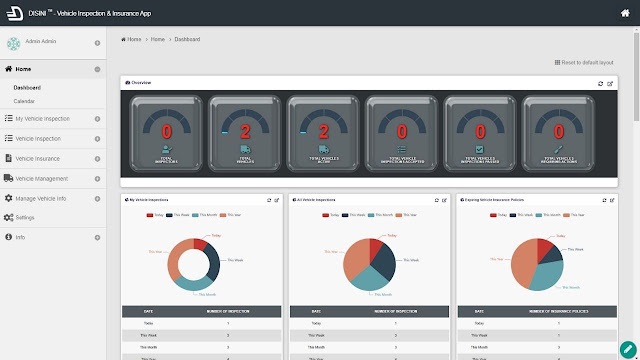What You Need to Develop a Successful Enterprise App
Enterprise applications have gone from being just optional add-ons to mission critical tools, necessary for smooth business operations in many organizations. A recent report by Apperian reveals that a vast number of corporate employees in 91% of the enterprises surveyed used work-related apps in 2016.
Worthy of note is the fact that a majority of organizations are planning to put more time, money, and effort into internal app development this year, thanks to the value apps bring to business — improved internal communication, increased operational efficiency, more seamless collaboration, anytime/anywhere access to data, and so on.
While this is good for workplace productivity, the problem is that as demand for business apps increases, internal developers may be forced to compromise quality in order to deliver more quickly. But business users have greater expectations — they want great user experience (UX) comparable to the ones found in consumer apps.
So how can you ensure you deliver a good enterprise app that's successful?
This post answers the question, but let's first have a brief look at what a “successful enterprise app” is:
 A successful enterprise app is one employees find helpful — even delightful — to use. It does at least one of the following:
A successful enterprise app is one employees find helpful — even delightful — to use. It does at least one of the following:
1. A clear purpose of the app with an appropriate framework
 Determine what problems the application will solve. This sort of structural framework will help you build an app that serves a clear purpose, something that's necessary for an app to be considered successful.
Determine what problems the application will solve. This sort of structural framework will help you build an app that serves a clear purpose, something that's necessary for an app to be considered successful.
KEY TAKEAWAY: Don't try to generalize the purpose of the app but make it task- or process-specific.
We'd even recommend you get all the major participants to come together to deconstruct the app idea down to the crux of its core value proposition, and then build up from there. You may also want to talk to the target users — employees — to understand their pain points and gauge what they actually need. This will keep everyone on the same page regarding what to expect, streamline the development and deployment processes, and increases the app’s chances of being adopted by employees and eventually succeeding.
2. User engagement
Great user experience is an important feature of every successful app. Without it, your app will be treated with disinclination by employees.
What should you do? Create better UX.
 A good idea might be to try to make your enterprise apps go head to head with well-built consumer apps in terms of UXD.
A good idea might be to try to make your enterprise apps go head to head with well-built consumer apps in terms of UXD.
Here's why:
Generally, people are accustomed to consumer apps that are intuitive, clean, and user-friendly. You need to integrate these attributes into your enterprise apps. Statista forecasts that by the end of this year, over a third of the world’s population will own a smartphone; that's an estimated total number of almost 2.6 billion smartphone users in the world. This will amp up market demand for business-focused apps that meet the high performance and usability of consumer apps.
Your aim should be to build something that's truly exciting and engaging for people to actually participate. It should be to proffer a solution that’s better than and different from the clutter employees see out there. It should be to create stuff that offers a more convenient way of interacting with job-related tasks, making it rewarding to use. Only then will it be used to the same degree as consumer apps.
Don't know where to start? Here are a few guidelines to give you a leg up:
Where and how people access your apps matter. Build it for just one platform and you might be excluding a number of employees from the experience.

Bring your own device (BYOD) is becoming increasingly popular in the corporate world. According to a report by Gartner, an IT-research and advisory firm, employees use an average of three devices in a typical work day in the modern workplace. The report mentions that as wearables and the Internet of Things (IoT) gain momentum, that number is expected to increase to five or six devices per day. This means for your enterprise app to gain ground, it needs to be cross-platform.
We recommend you go with a web-based app. That way, it’ll be available and used across devices regardless of platform or OS. Joget Workflow makes it easy to quickly create enterprise web apps that are mobile-optimized and cloud-ready.
4. Your IT team's support
It is not uncommon to try to have a go at building apps on your own, especially when using a no-code/low-code platform like Joget. But here’s what:
You need your IT…
Not necessarily to write code but to help minimize the roadblocks that may once in a while pop up during the development process and in the future. For one, you don’t want to make your IT feel as though you're replacing their jobs with a third-party service. Remember, they'll be responsible for managing the app after it’s developed and deployed. You need to work with them from day one and not only when you run into technically complex issues you can’t resolve on your own.
 With IT involved, you can be sure that you will be getting internal support like quickly handling minor bugfixes (this saves you from bugging your software vendor every time, which in turn saves your organization time and money) and their expert contribution, which all go to add to the overall success of your enterprise application.
With IT involved, you can be sure that you will be getting internal support like quickly handling minor bugfixes (this saves you from bugging your software vendor every time, which in turn saves your organization time and money) and their expert contribution, which all go to add to the overall success of your enterprise application.
5. Adoption strategy
Successful app development does not end with just the build process; it continues to deployment and adoption. And until the app fulfills its purpose, it's not successful. How can the app fulfill its purpose when it hasn’t been adopted and used by employees?
A study conducted by SAP points out that 78 percent of enterprise apps are abandoned after their first use.
Here's the rub:
The app development process may not be the hard part, but adoption. Some organizations struggle with this. This is why you need a good adoption strategy in place.

To start with, create an app that's enthralling and easy to use as discussed in point #2 above. Most times, employees are typically already swamped with too much work. For example, they might already be overwhelmed by the high number of emails they get each day. Introducing “another burden” will only result in a slap in the face for your app. Not nice!
Some gold nuggets to give you a kick in the butt?
Worthy of note is the fact that a majority of organizations are planning to put more time, money, and effort into internal app development this year, thanks to the value apps bring to business — improved internal communication, increased operational efficiency, more seamless collaboration, anytime/anywhere access to data, and so on.
While this is good for workplace productivity, the problem is that as demand for business apps increases, internal developers may be forced to compromise quality in order to deliver more quickly. But business users have greater expectations — they want great user experience (UX) comparable to the ones found in consumer apps.
So how can you ensure you deliver a good enterprise app that's successful?
This post answers the question, but let's first have a brief look at what a “successful enterprise app” is:
- Solves employees’ problems and makes their jobs easier.
- Fixes efficiency issues.
- Streamlines complex business processes in an organization.
- Capacitates effective collaboration between both individuals and departments.
- Curtails costs of time and money.
- Allows organizations to quickly and easily identify and take opportunities.
- Enables employees to continue working outside of a traditional workspace.
- Improves workflow and approval processes.
- Provides secure access to information.
Here are the most important things you need if you want to build internal apps that deliver these benefits:
1. A clear purpose of the app with an appropriate framework
One of the first things you will need is a well-defined, basic conceptual structure of the app you're trying to create. This comes at the ideation stage. The fact is, without an idea of what you want to build, you won't be able to actually build it.
KEY TAKEAWAY: Don't try to generalize the purpose of the app but make it task- or process-specific.
We'd even recommend you get all the major participants to come together to deconstruct the app idea down to the crux of its core value proposition, and then build up from there. You may also want to talk to the target users — employees — to understand their pain points and gauge what they actually need. This will keep everyone on the same page regarding what to expect, streamline the development and deployment processes, and increases the app’s chances of being adopted by employees and eventually succeeding.
2. User engagement
Great user experience is an important feature of every successful app. Without it, your app will be treated with disinclination by employees.
What should you do? Create better UX.
Here's why:
Generally, people are accustomed to consumer apps that are intuitive, clean, and user-friendly. You need to integrate these attributes into your enterprise apps. Statista forecasts that by the end of this year, over a third of the world’s population will own a smartphone; that's an estimated total number of almost 2.6 billion smartphone users in the world. This will amp up market demand for business-focused apps that meet the high performance and usability of consumer apps.
Your aim should be to build something that's truly exciting and engaging for people to actually participate. It should be to proffer a solution that’s better than and different from the clutter employees see out there. It should be to create stuff that offers a more convenient way of interacting with job-related tasks, making it rewarding to use. Only then will it be used to the same degree as consumer apps.
Don't know where to start? Here are a few guidelines to give you a leg up:
- Keep all interactions within the app short and straightforward.
- Provide as much information as necessary to easily complete each action… sort of quick walkthroughs.
- Offer some level of customization so each user can tailor the app to their own needs.
- KISS it. (Not literally though; I'm talking about applying the ‘keep it simple, stupid’ principle when dragging and dropping those design elements.)
- And don't forget that UI is a key factor in user experience design. A flabby, strewn interface can turn users down forever.
Where and how people access your apps matter. Build it for just one platform and you might be excluding a number of employees from the experience.
Bring your own device (BYOD) is becoming increasingly popular in the corporate world. According to a report by Gartner, an IT-research and advisory firm, employees use an average of three devices in a typical work day in the modern workplace. The report mentions that as wearables and the Internet of Things (IoT) gain momentum, that number is expected to increase to five or six devices per day. This means for your enterprise app to gain ground, it needs to be cross-platform.
We recommend you go with a web-based app. That way, it’ll be available and used across devices regardless of platform or OS. Joget Workflow makes it easy to quickly create enterprise web apps that are mobile-optimized and cloud-ready.
4. Your IT team's support
It is not uncommon to try to have a go at building apps on your own, especially when using a no-code/low-code platform like Joget. But here’s what:
You need your IT…
Not necessarily to write code but to help minimize the roadblocks that may once in a while pop up during the development process and in the future. For one, you don’t want to make your IT feel as though you're replacing their jobs with a third-party service. Remember, they'll be responsible for managing the app after it’s developed and deployed. You need to work with them from day one and not only when you run into technically complex issues you can’t resolve on your own.
5. Adoption strategy
Successful app development does not end with just the build process; it continues to deployment and adoption. And until the app fulfills its purpose, it's not successful. How can the app fulfill its purpose when it hasn’t been adopted and used by employees?
A study conducted by SAP points out that 78 percent of enterprise apps are abandoned after their first use.
Here's the rub:
The app development process may not be the hard part, but adoption. Some organizations struggle with this. This is why you need a good adoption strategy in place.
To start with, create an app that's enthralling and easy to use as discussed in point #2 above. Most times, employees are typically already swamped with too much work. For example, they might already be overwhelmed by the high number of emails they get each day. Introducing “another burden” will only result in a slap in the face for your app. Not nice!
Some gold nuggets to give you a kick in the butt?
- Offer incentives if you have to, but the best adoption strategy should be building an app that incentivizes its own adoption through its features and benefits.
- Talk them into using the app; if they understand it will help make their job easier, then they will use it.
- Follow up after the initial deployment, stay engaged with users, and identify and solve complaints.
- Sometimes, all you really need to do is train the staff on using the app.
What You Don't Need
So above we’ve discussed some of the most important things you need to make your enterprise app successful. Good stuff, but here’s what you don’t necessarily need:
Coding skills!
Codeless development is growing in popularity. Rapidly. It's the future. And this means anyone can easily develop and deploy apps quickly using talent they already have.
If becoming a professional programmer intrigues you, great. But if you’re interested in building usable apps in minutes without gambling with quality, then you don’t necessarily need to learn to code; just learn how to work with technology. The trick is to take the next step by getting started with Joget Workflow today if you aren't already doing so.
So above we’ve discussed some of the most important things you need to make your enterprise app successful. Good stuff, but here’s what you don’t necessarily need:
Coding skills!
Codeless development is growing in popularity. Rapidly. It's the future. And this means anyone can easily develop and deploy apps quickly using talent they already have.
If becoming a professional programmer intrigues you, great. But if you’re interested in building usable apps in minutes without gambling with quality, then you don’t necessarily need to learn to code; just learn how to work with technology. The trick is to take the next step by getting started with Joget Workflow today if you aren't already doing so.



Comments
Post a Comment